Without a Dawn review
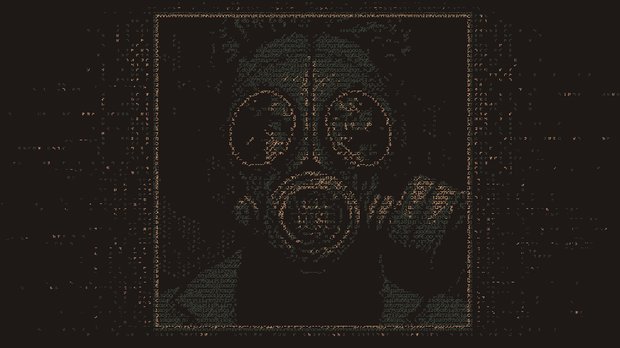
- 0 Comments
Jesse Makkonen’s dark horror story may be missing any real gameplay but shines as a uniquely designed short visual novel
I was ten years old when I learned to type, on a big old manual typewriter. I followed lessons after school, and it was pretty boring. Typing the same three letters over and over again, only to move on to three other letters. Finally I got to practice real words, sentences, paragraphs! But what I really found interesting was an image at the back of the course book, a shape of a woman made up of different letters and symbols. It was a very basic form of typewriter art, and I loved it and tried to replicate it for myself. Soon, though, it became obvious that I was better as a writer than a graphic artist.
Indie developer Jesse Makkonen, however, can do it all. Afterdream and his Distraint series, among others, have shown he can write deep stories, create amazing graphics, and program it all into coherent gaming experiences. But Makkonen has done something different this time, as his latest brainchild, Without a Dawn, is more a visual novel than a true game. A very good one, but be forewarned that the only thing interactive about it is clicking through the dialogue and sometimes having to choose between two possible replies. And even there, the story will always force you to choose that one reply you are trying to avoid. The illusion of choice thus shatters pretty early on.
But this intentional forced linearity very much fits the story and theme. You “play” – if you can really call it that – as a young woman who is not only troubled by nightmares but also by some kind of anxiety disorder. She’s on the verge of depression, or perhaps has already crossed that dark threshold. Her thoughts form a hurricane in her head, and her mind never rests, though that seems to be all her body wants to do. The narrator’s voice haunting both her nightmares and her waking moments is actually her own. This form of talking to herself, trying to convince herself of all sorts of illogical things, then commenting on how she responds, is its own kind of psychoanalysis.
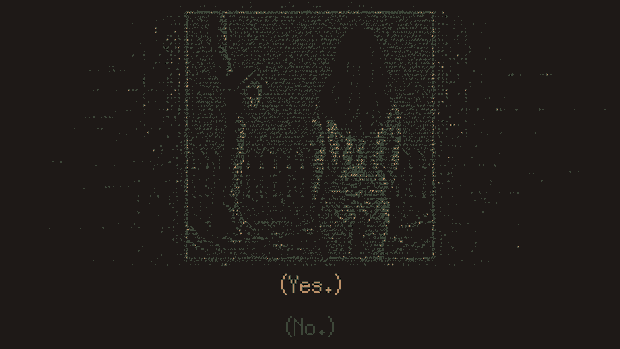
As she lays in bed, in a small cabin in the woods where she’s desperately seeking refuge, the voice tells her to check the window, because there might be someone outside. And might there really be something hiding in that birdhouse in the yard, as she saw in her dream? Perhaps she should go outside to check? But when she does, did she leave the door open herself, or has someone breached her lone sanctuary? With every suggestion proposed, you can refuse a couple of times, triggering a couple more responses from the voice, but eventually there is no other way to progress than to do what it says.
Yet every step she does take, she’s further interrupted by that voice of her subconscious. Or at least, that’s how I interpreted the story. Maybe it actually is an external voice? It’s all up for interpretation, as many works of art are. There is not one definitive answer, only individual experience. There are questions, but no universal truth here. Makkonen offers the narrative, but you turn its meaning into a message for yourself.
Making Without a Dawn even more surreal, Makkonen went so far as to visualize this particular story in the most astonishing way I have ever encountered. The best way to describe it is the way Keanu Reeves as Neo in The Matrix sees the world around him when he finally accepts that he’s “The One.” Instead of typewriter art like I tried many years earlier, it’s digital ASCII art – or “pseudo-ASCII art,” as Makkonen calls it.
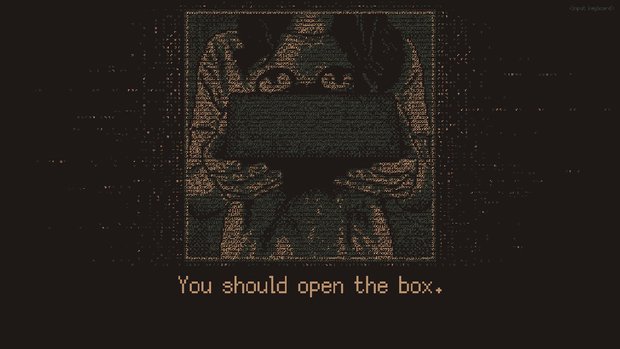
The viewable area is centered in a small frame from which lines of code seem to drip. The code is constantly moving, as if part of a movie scene projected on a sheet flowing in the wind. The textures created by these ever-changing characters move like blades of grass or water on the ocean, very fluid. But the overall images they form have small animations themselves, like the woman blinking, her clothes and hair rippling, and tree branches outside her window swaying in the wind.
The moving text characters made me think of a peculiar form of television static as well, especially when the woman encounters dark shapes slowly approaching from a distance. Playing the game, you sometimes even start to doubt yourself: can you really see something there, or are you only imagining, your own mind being fooled by the suggestive words of the narrator’s voice?
The story takes place at night, so it's a very dark environment to begin with, but there’s an oppressive weight to the visuals as well. The default monochromatic color palette is sepia-toned, with beige characters against a dark brown background, but there are about ten different palettes you can choose from in the settings, each with its own dominant color, from light blue to dark red. The appearance of the main view frame can be altered here too, even adding an ocean background outside its borders.
Both the score and sound effects are of amazingly high quality as well. The pattering rain, the howling wind, the woman’s footsteps, a ticking clock in her bedroom, the opening and closing of the window blinds – it all sounds as if you’re really there. In dreams you can hear the beeping of Morse code, which I’m now wondering might have conveyed a real message. But the music itself is often used as a kind of sound effect too, with lots of high-pitched strings that are haunting, almost like an air raid siren. At times I felt like this woman was one more tortured soul in the foggy, other-dimensional world of Silent Hill.
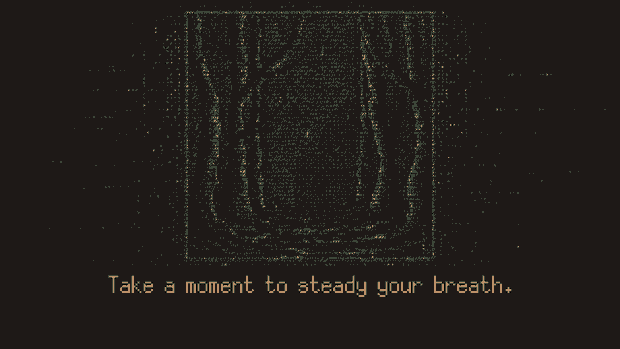
There’s no survival element involved here, but besides the psychological exploration of this poor woman’s fractured mind, Without a Dawn is indeed a horror story as well. In the protagonist’s nightmares, a recurring character makes her doubt what is real and what’s not: a mysterious man wearing a gas mask, who is shown in extremely uncomfortable, disturbing close-ups as he tries to convince her she needs to find him in the waking world.
The creepiness is further enhanced by the occasional jump scare – usually loud noises or music – though they’re not overdone. Which may actually be more scary, as every step of the way I was afraid of what might come next; of making the wrong choice even though it was already obvious those choices didn’t matter; of some kind of truly mortal danger appearing that would end the life of this woman I felt somehow responsible for. My adrenaline rose each time the music increased in volume and tempo.
Unfortunately, clicking through this chilling, well-crafted story takes only about forty minutes, depending on how contrary you are when dealing with the voice’s commands. It’ll be much shorter if you immediately do as you are told, but I believe we’re meant to resist for a bit, to better feel afterwards how futile that resistance always was to begin with. When you suffer from severe anxieties, logical thinking won’t help and you can only follow that little voice inside your head, giving in to the effect anxiety has on your body. It’s as if suddenly there is no free will anymore, and you feel as if somebody else is pulling your strings.
Adding a little more potential length and value to an otherwise very brief experience, Makkonen provides some behind-the-scenes fun for those with technical and creative skills. Through several short manuals, he explains how you can add your own voice-overs to the game – it isn’t originally voiced – make your own localization, or add even more personalized color palettes, view frames, and graphical textures than are already available in the settings.
Final Verdict
Based on the developer’s previous games, I was disappointed that there wasn’t much else to do in Without a Dawn than clicking through dialogue choices. Especially when these don’t prove to be real choices to begin with. This is a pure visual novel that wants to tell a chilling story while dazzling you with its unique graphics. In that it definitely succeeds, as it almost made me afraid to go to bed, nervous that someone could be standing outside my own window or the man with the gas mask might appear in my dreams too. But I do wish there had been at least a bit more interactivity, more direct control of the main character, to pull you in further instead of making you feel like nothing more than a spectator. And perhaps be a little longer so I could admire the impressive art style and haunting soundscape. It may not be much of a game, but nobody can argue that Jesse Makkonen isn’t a storytelling artist.
Hot take
Clicking through the short, experimental visual horror story Without a Dawn is so chilling that you’ll probably be willing to overlook the complete lack of gameplay usually found in a Jesse Makkonen adventure.
Pros
- Unique visual style
- Eerily atmospheric music and sound effects
- Short horror story takes a disturbingly deep dive into the human psyche
Cons
- Not a game so much as a click-through story
- Any illusion of choice is quickly shattered
Johnny played Without a Dawn on PC using a review code provided by the game’s publisher.


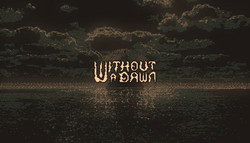
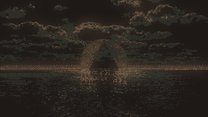

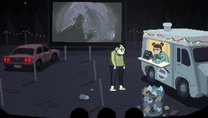
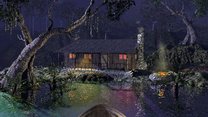
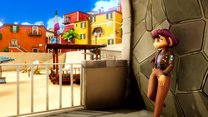

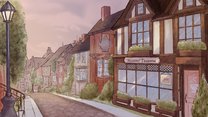

0 Comments
Want to join the discussion? Leave a comment as guest, sign in or register.
Leave a comment